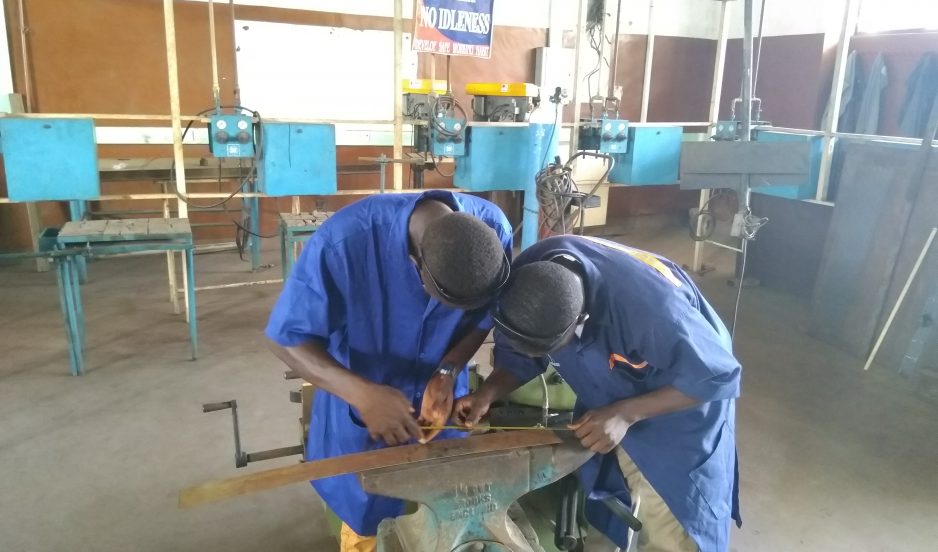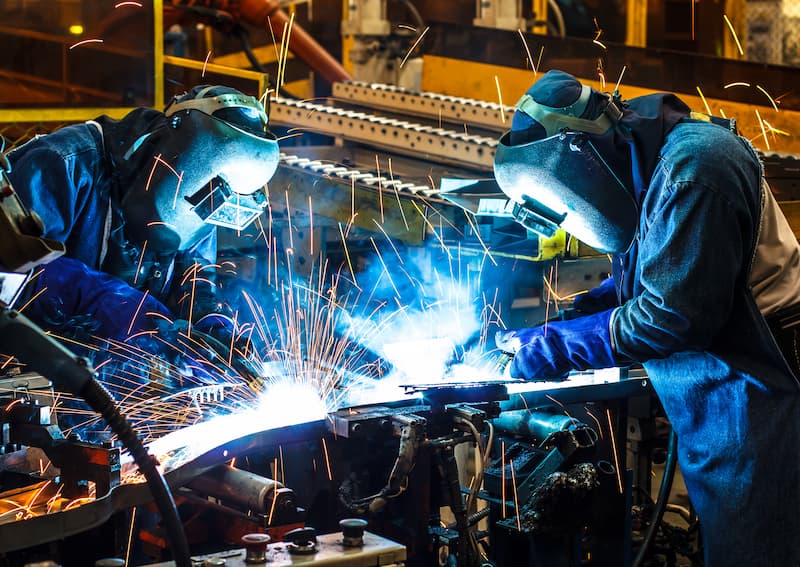Common Welding Fixing Issues and Just How to Address Them Effectively
Welding repairs frequently experience a variety of concerns that can endanger the stability of the end product. Typical troubles include poor infiltration, porosity, and misalignment, among others. Each defect provides special difficulties that require particular techniques for resolution. Understanding these concerns is necessary for welders intending to enhance their abilities and results. This conversation will certainly discover these typical welding repair concerns and reliable approaches to address them.
Poor Infiltration
Inadequate infiltration takes place when the weld steel falls short to completely fuse with the base product, causing weak joints and potential architectural failures. This issue typically originates from inadequate warmth input, incorrect electrode angle, or improper welding rate. Welders may run into inadequate infiltration as a result of a mistake of the necessary parameters for a details material density or kind. In addition, contamination on the base product's surface can prevent reliable bonding, intensifying the trouble. To deal with insufficient penetration, welders ought to assure proper setups on their devices and preserve a tidy job surface. Regular evaluation of welds is recommended to recognize any deficiencies early, enabling for timely corrections and the prevention of jeopardized structural stability in welded settings up.
Porosity
Porosity is an usual issue in bonded joints that manifests as tiny gas bubbles entraped within the weld metal. This flaw can compromise the integrity of the weld, resulting in reduced toughness and potential failure under stress. Montana Mobile Welding and Repair Belgrade. Porosity generally arises from contamination, moisture, or inappropriate welding strategies, which permit gases to get away right into the molten weld pool. To deal with porosity, welders need to guarantee appropriate surface area prep work, preserve a clean workplace, and utilize suitable welding specifications. Additionally, picking the ideal filler material and securing gas can alleviate gas entrapment. Normal evaluation and testing of welds can aid identify porosity early, ensuring prompt rehabilitative activities are taken, thereby maintaining the top quality and reliability of the welded structure
Misalignment
Misalignment in welding can occur from various variables, including incorrect configuration and thermal growth. Recognizing the root triggers is vital for reliable resolution. A number of improvement strategies are readily available to realign components and guarantee structural integrity.
Reasons for Misalignment
Welding imbalance commonly comes from a variety of underlying issues that can endanger structural honesty. One primary cause is improper fit-up of elements before welding, which can bring about gaps and irregular surface areas. Variants in thermal expansion during the welding procedure can likewise result in distortion, especially if the materials being signed up with have various coefficients of expansion. Additionally, poor securing and fixturing may fail to hold parts firmly in place, resulting in motion during welding. Badly kept tools, including welding machines and tools, may present disparities in the weld grain, further adding to misalignment. Driver error, stemming from inadequate training or experience, can likewise play a considerable duty in creating misaligned welds.

Adjustment Methods Available
Dealing with imbalance properly needs a mix of rehabilitative strategies tailored to the particular concerns available. One usual approach is making use of components or jigs to hold components in the proper position during welding, making certain consistent alignment. Furthermore, pre-heating the products can assist lower distortion and enhance fit-up. For significant imbalance, mechanical realignment techniques, such as making use of hydraulic jacks or clamps, can be employed to correct the placement prior to welding. Post-weld heat therapy might additionally be required to eliminate tensions triggered by imbalance. Finally, careful evaluation and adjustment throughout the configuration phase can protect against imbalance problems from becoming substantial problems, advertising a smoother welding procedure and improving overall architectural stability.
Distortion
Distortion is a common challenge in welding that can arise from numerous elements, consisting of irregular heating and cooling. Understanding the causes of distortion is necessary for executing effective prevention techniques. Resolving this problem not only enhances architectural stability however also boosts the total top quality of the weld.
Sources of Distortion
When based on the intense warmth of welding, products frequently undertake adjustments that can lead to distortion. This phenomenon mainly develops from thermal growth and tightening throughout the welding procedure. As the weld location warms up, the product expands; upon air conditioning, it acquires, which can create inner stresses. In addition, irregular home heating across a work surface can worsen these stress and anxieties, resulting in warping or flexing. The sort of product likewise plays a significant function; metals with varying thermal conductivity and coefficients of expansion may respond in different ways, causing unpredictable distortions. In addition, inadequate joint layout and inadequate fixturing can add to imbalance during welding, boosting the probability of distortion. Understanding these causes is crucial for efficient welding repair work and prevention approaches.
Avoidance Techniques
Effective prevention methods for distortion throughout welding concentrate on regulating warm input and making sure appropriate joint design. Preserving a constant warm input aids to decrease thermal expansion and tightening, which can lead to distortion. Making have a peek at this website use of techniques such as pre-heating the workpiece can likewise lower the temperature level gradient, promoting uniform heating. Furthermore, selecting suitable joint designs, such as T-joints or lap joints, can enhance security and lower stress and anxiety concentrations. Implementing proper fixturing to protect the workpieces in place better aids in preserving placement throughout the welding procedure. Ultimately, staggered welding sequences can distribute warmth a lot more equally, stopping local distortion. By applying these methods, welders can considerably decrease the possibility of distortion and improve the general top quality of their welds.
Fracturing
Cracking is an usual issue encountered in welding repair services, usually resulting from numerous variables such as incorrect cooling prices, product option, or insufficient joint preparation. The event of fractures can greatly compromise the stability of the weld, leading to prospective failures during procedure. To resolve this issue, welders should first evaluate the origin, guaranteeing that products work and appropriately selected for the particular application. Furthermore, controlling the cooling price during the welding procedure is essential; fast air conditioning can generate tension and bring about breaking. Appropriate joint design and prep work likewise contribute to reducing the risk. Applying these techniques can boost weld quality and sturdiness, eventually lowering the chance of cracking in ended up weldments.

Insufficient Combination
A considerable Going Here issue in welding repairs is insufficient combination, which takes place when the weld metal does not adequately bond with the base product or previous weld passes - Belgrade Fabrication. This flaw can lead to weak points in the joint, possibly endangering the stability of the welded framework. Elements adding to incomplete fusion consist of insufficient warmth input, improper welding strategy, and contamination of the surface areas being signed up with. To address this issue properly, welders must ensure proper pre-weld cleaning and surface area prep work, along with readjust their welding specifications to accomplish appropriate infiltration and combination. Normal examination during the welding process can likewise help recognize incomplete blend early, enabling prompt corrective actions to improve the overall quality of the weld
Overheating
While welding repairs can improve architectural honesty, overheating provides a substantial obstacle that can cause material why not try these out degradation. Extreme heat throughout welding can alter the mechanical properties of steels, causing minimized stamina, enhanced brittleness, and warping. This sensation is especially important in high-stress applications where structural dependability is vital. Recognizing overheating can entail visual examinations for staining or distortion, along with checking temperature throughout the welding procedure. To mitigate the dangers connected with getting too hot, welders need to use suitable techniques, such as regulating warmth input, changing travel speed, and utilizing suitable filler materials. Additionally, carrying out pre- and post-weld heat therapies can assist recover material homes and improve the total high quality of the repair, ensuring long-term performance and safety and security.
Frequently Asked Inquiries
What Are the Usual Indications of a Welding Flaw?

Exactly How Can I Check My Welds for Top quality?
To check welds for quality, one can utilize aesthetic inspections, ultrasonic screening, and radiographic approaches. Each strategy assures structural honesty, identifies defects, and confirms adherence to defined criteria, eventually boosting the integrity of the bonded joints.
What Safety Precautions Should I Take While Welding?
When welding, one should focus on safety by putting on appropriate individual safety tools, making sure proper air flow, protecting combustible materials away, preserving a clean work space, and knowing environments to avoid injuries and crashes.
Can I Fix a Weld Without Redoing the Entire Joint?
Repairing a weld without remodeling the whole joint is feasible, depending on the damages (Montana Mobile Welding and Repair Belgrade Welding). Techniques such as grinding, adding filler material, or utilizing a welding process can efficiently deal with particular flaws while maintaining the bordering framework
What Tools Are Necessary for Efficient Welding Fixes?
Important tools for reliable welding repair services include a welding maker, cable brush, mill, protective gear, clamps, and filler products. Each tool plays a vital function in guaranteeing top quality and security throughout the repair procedure. Porosity typically emerges from contamination, wetness, or improper welding techniques, which allow gases to get away right into the molten weld pool. Improperly conserved tools, including welding machines and tools, may introduce inconsistencies in the weld bead, further contributing to misalignment. When subjected to the intense warm of welding, materials typically go through changes that can lead to distortion. Cracking is an usual issue come across in welding repair work, often resulting from numerous elements such as improper cooling prices, material option, or insufficient joint preparation. A substantial concern in welding fixings is insufficient fusion, which occurs when the weld steel does not effectively bond with the base material or previous weld passes.